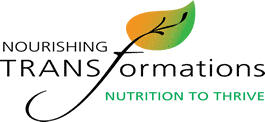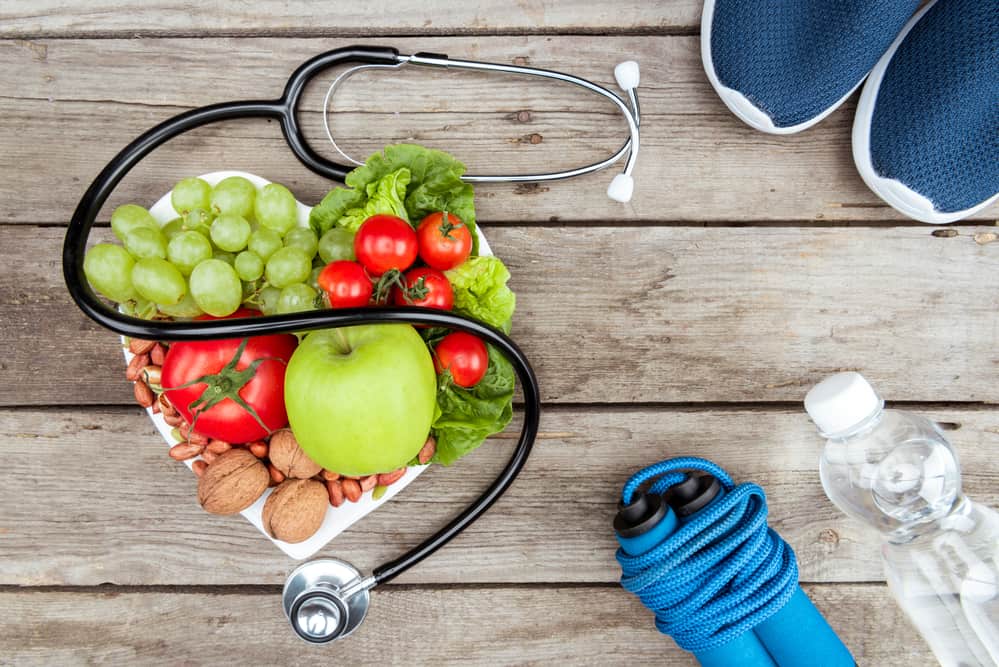Did you know that 45 percent of people in the United States will have at least one issue related to heart disease by 2035? I don’t know about you, but I don’t want to be any part of that statistic if I can avoid it! Your heart tirelessly pumps 2,000 gallons of blood through 50,000 miles of arteries every single day! If that’s not enough to show it a little extra love I don’t know what is. February is heart health month so let’s take a few minutes to see what factors we can influence to help prevent joining this group.
Tip #1 Start with Real Food
Of course, as a Nutrition Therapist I’m going to start with food. The Standard American Diet is filled with foods that cause inflammation which affects the health of our arteries. According to the U.S. Department of Agriculture estimates, 32 percent of our calories dome from animal foods, 57 percent from processed foods, and only 11 percent from whole grains, beans, fruits, vegetables and nuts! Processed foods have little to no real nutrient value and are usually comprised of inflammatory fats. Plant-based foods are essential to healing the body and reducing inflammation – so shoot for 5-7 servings of whole, plant-based foods each day! Crowd out those processed foods with nutrient dense, brightly colored choices to give your heart something to work with.
Emphasize:
- Wild caught salmon – full of omega-3 fatty acids which help stabilize plaque, reduce inflammation, decrease triglyceride levels and lower blood pressure.
- High fiber foods such as oats, beans, lentils, avocados, most fruits and vegetables – these foods have been associated with lowering risk of heart disease. The beta-glucan in whole oats (avoid instant) is a soluble fiber that soaks up extra cholesterol and moves it through the digestive system to it’s not absorbed.
- Olive oil is loaded with potent, inflammation-suppressing antioxidants called polyphenols and is a great source of monounsaturated fat which helps reduce LDL cholesterol.
- Whole grains (not processed) such as brown rice, millet, quinoa, and buckwheat – contain a wide range of nutrients and fiber that are associated with reduced risk of heart disease.
- Walnuts are one of the best sources of natural vitamin E and high in fiber.
- Berries and Dark leafy green vegetables
- Dark Chocolate – YAY! Cocoa and dark chocolate (skip the milk and white chocolate) have high marks for cardiovascular benefits including improvements in cholesterol levels, blood pressure, blood clotting, coronary artery function and insulin sensitivity.
Avoid:
Tip #2 Get 30 Minutes of Activity Each Day
We don’t all have to be body builders but getting some type of activity that gets your heart pumping for a minimum of 30 minutes each day is essential for heart health. Mix up your workouts with some strength training and 15-20 minutes of high-intensity cardio – it’s not necessary to spend an hour on a treadmill to reap benefits! Be NEAT! (Non-exercise Activity Thermogenesis) – that is, movement throughout the day like getting up to walk around every hour, using a standing desk for part of the day or other similar activity versus sitting. Sitting is now the new smoking when it comes to risk of heart disease so get up and move! Speaking of which…
Tip #3 Stay Away from Smoke
I can’t believe we’re still having the conversation about smoking and its affect on health, but 34.3 million people still smoke! And now we have a vaping epidemic among teens that undoubtedly will affect heart health for them as they age. Just say no. Get help to quit if you need it – it’s the single most effective tip for preventing heart attacks.
Tip #4 SLEEP!
Getting 7-8 hours of sleep per night is essential for heart health – NOT 4 or 5! This affects weight, blood pressure, aging, and arterial health amongst other issues. A recent paper published in the European Heart Journal, found that participants with the best sleep had a 34 percent reduced risk of CVD when compared with participants with the worst sleep. The researchers also looked at genes related to cardiovascular disease risk and found that among those at the highest genetic risk, healthy sleep patterns were protective. Proving once again we are not necessarily victims of our genes!
Tip #5 Achieve and Maintain an Optimal Body Weight
If you follow the Standard American Diet you might find weight management to be challenging. An even better assessment is your BMI (Body Mass Index) – most gyms or recreation centers offer BMI calculations which is a much more accurate predictor of risk over weight alone or using a standard BMI calculator. Aim for a true BMI of 20-25.
Testing
Want to really ramp up your prevention? Do some deeper testing to understand your personal risk factors. Ask your physician for these basic tests:
- Full cholesterol panel that includes the LDL particle number, apoB, Lp(a), and oxidized LDL
- Hemoglobin A1C (3-month blood sugar average) and fasting insulin
- High Sensitivity C-reactive protein – a marker of inflammation
- Homocysteine – when this amino acid is too high in the blood it can damage the arterial lining
- Vitamin D – low levels of this hormone (it’s not really a vitamin) are associated with increased risk of cardiovascular disease, including hypertension, heart failure and ischemic heart disease.
Here’s an article that gives a great explanation about the relationship between cholesterol, heart disease and these expanded markers: https://chriskresser.com/functional-medicine-approach-to-high-cholesterol/
There is also a powerful documentary on why these tests are so important, called The Widow Maker which I encourage you to watch – again, information is power.


